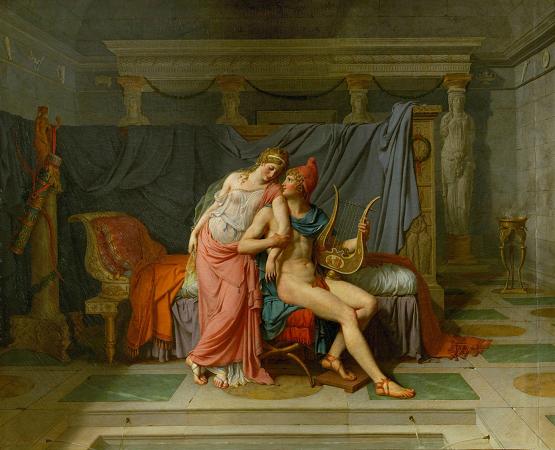Helen of Troy. In Greek mythology, Helen of Troy, also known as Helen of Sparta, was said to have been the most beautiful woman in the world. She was married to King Menelaus of Sparta but was abducted by Prince Paris of Troy after the goddess Aphrodite promised her to him in the Judgement of Paris. This resulted in the Trojan War when the Achaeans set out to reclaim her. She was believed to have been the daughter of Zeus and Leda, and was the sister of Clytemnestra, Castor and Polydeuces, Philonoe, Phoebe and Timandra. Elements of her putative biography come from classical authors such as Aristophanes, Cicero, Euripides, and Homer. Her story reappears in Book II of Virgil's Aeneid. In her youth, she was abducted by Theseus. A competition between her suitors for her hand in marriage saw Menelaus emerge victorious. An oath sworn by all the suitors required all of them to provide military assistance to the winning suitor, whomever he might be, if she were ever stolen from him; the obligations of the oath precipitated the Trojan War. When she married Menelaus she was still very young; whether her subsequent departure with Paris was an abduction or an elopement is ambiguous. The legends of Helen in Troy are contradictory: Homer depicts her as a wistful, even sorrowful figure, who came to regret her choice and wished to be reunited with Menelaus. Other accounts have a treacherous Helen who simulated Bacchic rites and rejoiced in the carnage she caused. Ultimately, Paris was killed in action, and in Homer's account Helen was reunited with Menelaus, though other versions of the legend recount her ascending to Olympus instead. A cult associated with her developed in Hellenistic Laconia, both at Sparta and elsewhere; at Therapne she shared a shrine with Menelaus. She was also worshiped in Attica and on Rhodes. Her beauty inspired artists of all times to represent her, frequently as the personification of ideal human beauty. Images of Helen start appearing in the 7th century BCE. In classical Greece, her abduction by Paris-or escape with him-was a popular motif. In medieval illustrations, this event was frequently portrayed as a seduction, whereas in Renaissance paintings it was usually depicted as a rape by Paris. Christopher Marlowe's lines from his tragedy Doctor Faustus are frequently cited: Was this the face that launched a thousand ships / And burnt the topless towers of Ilium?. The etymology of Helen's name continues to be a problem for scholars. Georg Curtius related Helen to the moon. It has also been suggested that the of arose from an original, and thus the etymology of the name would be connected with the root of Venus. Linda Lee Clader, however, says that none of the above suggestions offers much satisfaction. Others have connected the name's etymology to a hypothetical Proto-Indo-European sun goddess, noting the name's connection to the word for sun in various Indo-European cultures. In particular, her marriage myth may be connected to a broader indo-European marriage drama of the sun goddess, and she is related to the divine twins, just as many of these goddesses are. None of the etymological sources appear to support the existence, save as a coincidence only, of a connection between the name of Helen and the name by which the classical Greeks commonly described themselves, namely Hellenes, after Hellen the mythological progenitor of the Greeks. The origins of Helen's myth date back to the Mycenaean age. Her name first appears in the poems of Homer but scholars assume that such myths derive from earlier Mycenaean Greek sources. Her mythological birthplace was Sparta of the Age of Heroes, which features prominently in the canon of Greek myth: in later ancient Greek memory, the Mycenaean Bronze Age became the age of the Greek heroes. The kings, queens, and heroes of the Trojan Cycle are often related to the gods, since divine origins gave stature to the Greeks' heroic ancestors. The fall of Troy came to represent a fall from an illustrious heroic age, remembered for centuries in oral tradition before being written down.
more...














